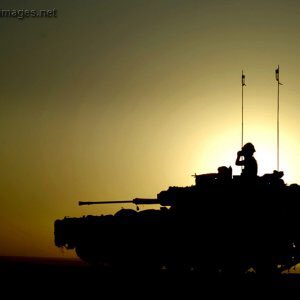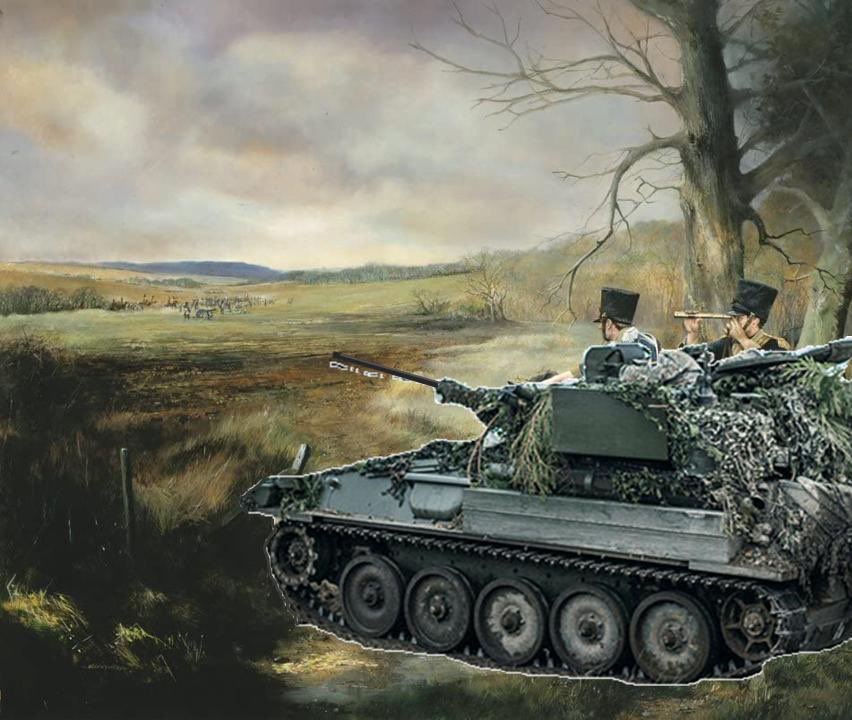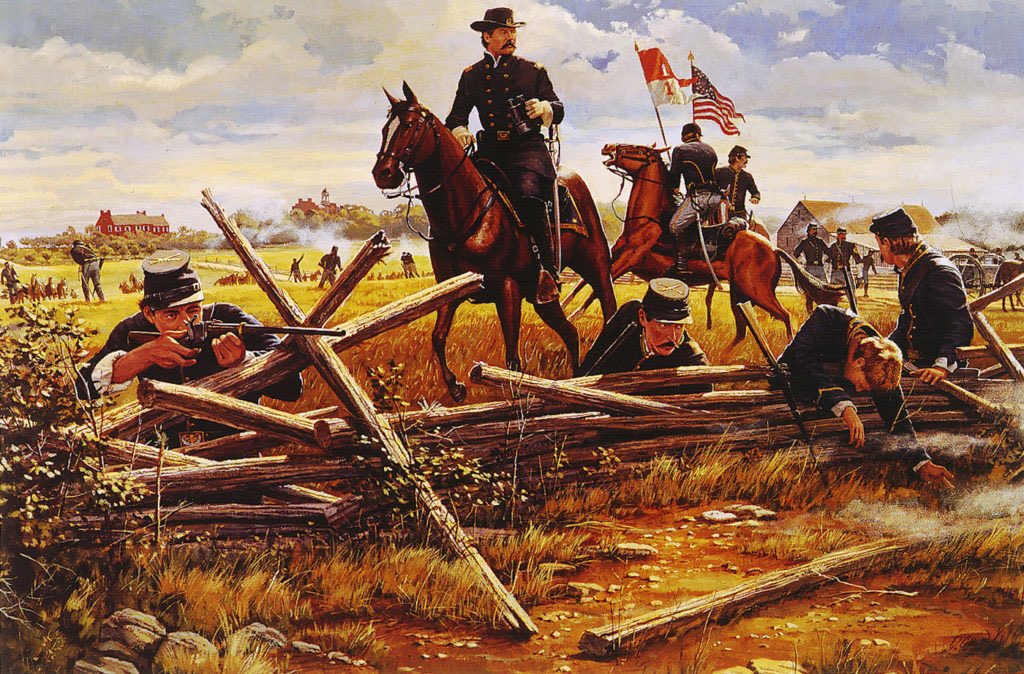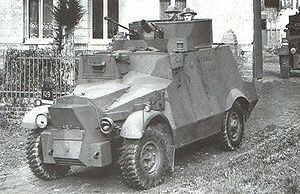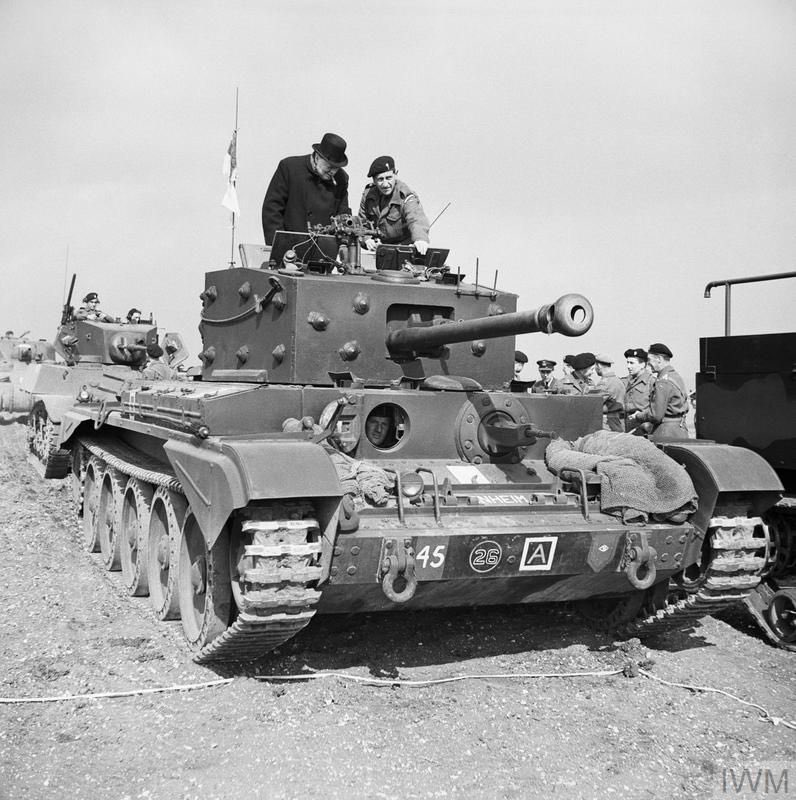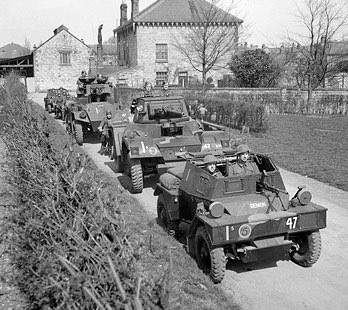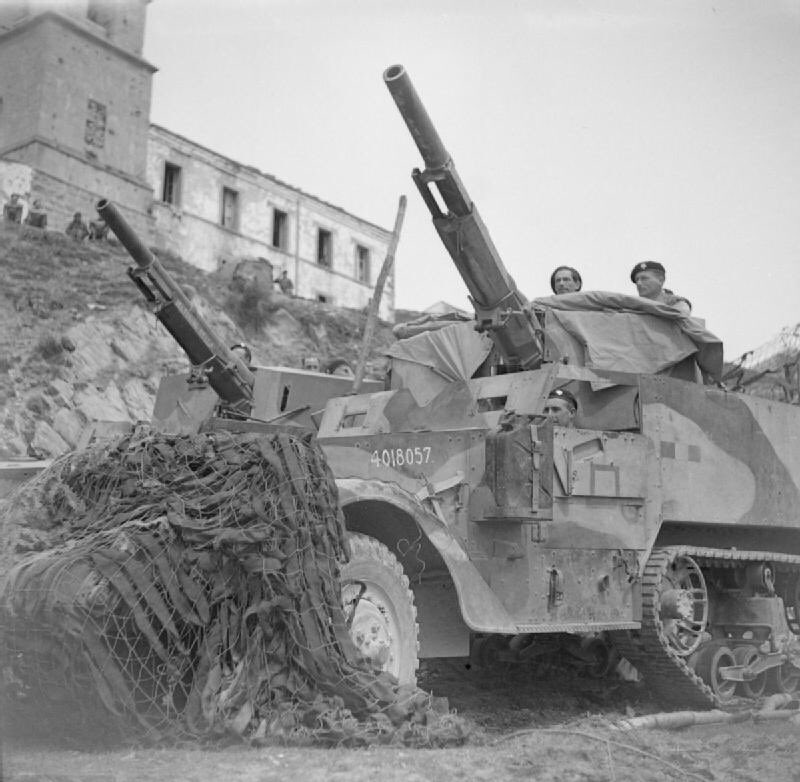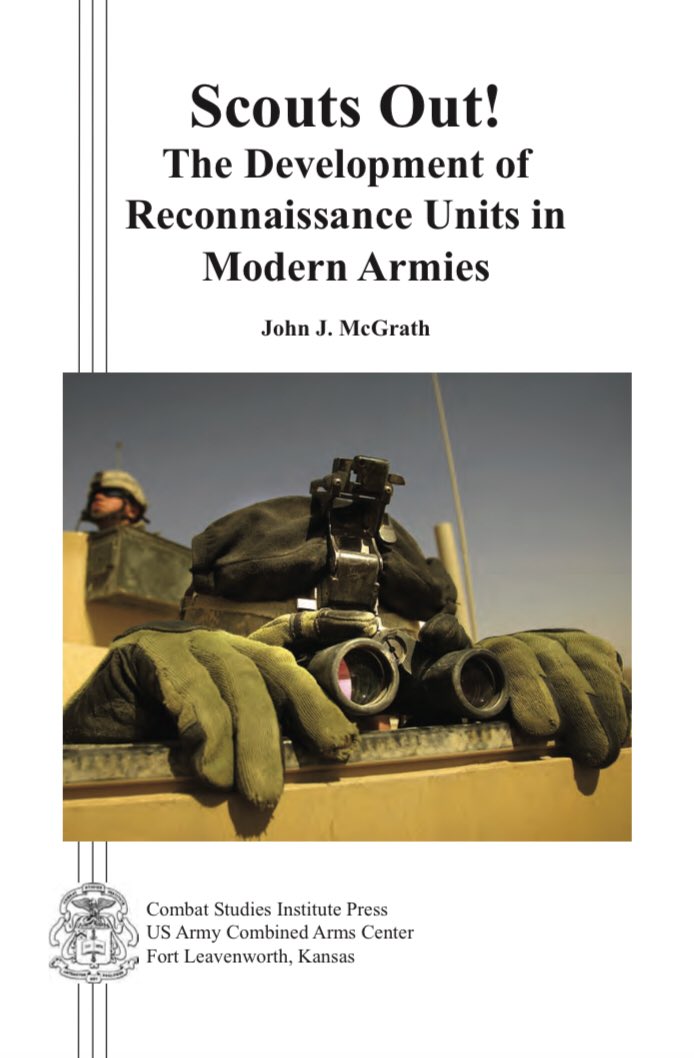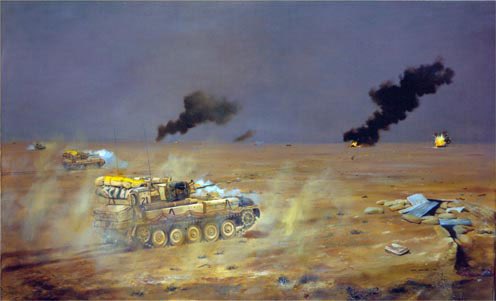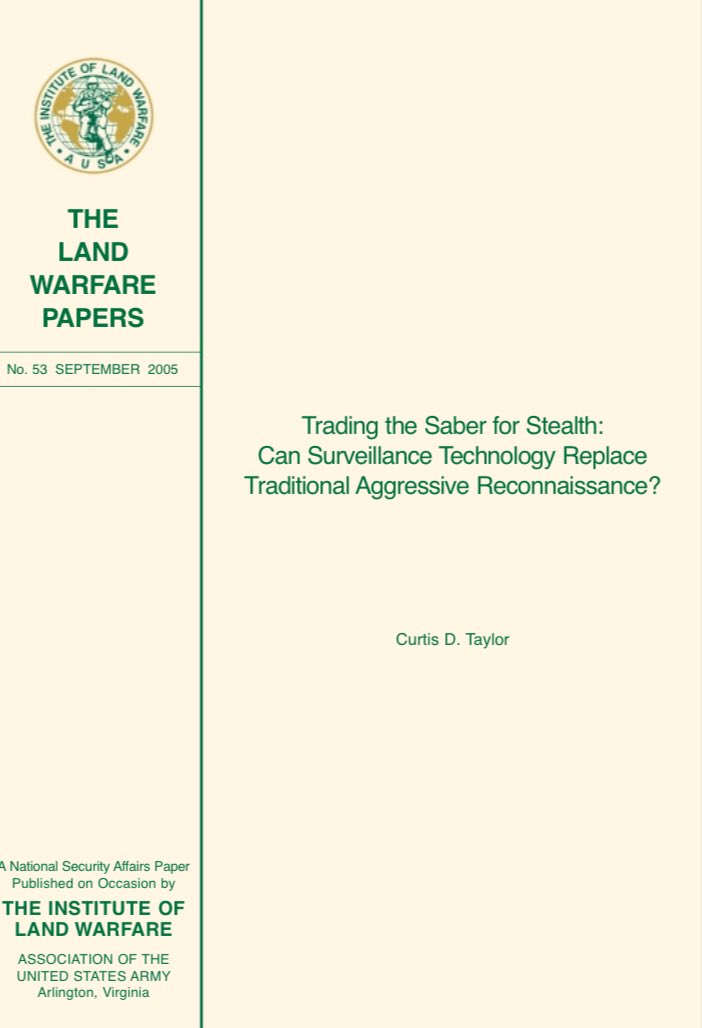Is Recce by stealth dead (and was it ever alive?) - A Thread.
‘Whither Recce’ has always been an emotive subject in the RAC - perhaps more so with the end of CVR(T) in sight.
@thinkdefence @bermicourt @charles57445495 @thepagey @combatrecce_CO @EdOBrien
‘Whither Recce’ has always been an emotive subject in the RAC - perhaps more so with the end of CVR(T) in sight.
@thinkdefence @bermicourt @charles57445495 @thepagey @combatrecce_CO @EdOBrien
One of principle debates has always been around whether Recce should be fundamentally conducted by stealth, by force - or something in between.
Before anyone leaps straight down my throat, I might point out up front that there may be no *correct* answer...
Before anyone leaps straight down my throat, I might point out up front that there may be no *correct* answer...
This is part because it’s difficult to find examples of where Recce - particularly at Bde or Div level - has ever been employed according to extant doctrine.
In this respect, it may be useful to compare the British experience with that of other nations - such as the US Army.
In this respect, it may be useful to compare the British experience with that of other nations - such as the US Army.
It’s fair to say that in WW2, the British Army went almost full circle.
Starting with armoured cars and light tanks, more and more firepower was added - to the extent that an Armd Div Recce Regiment in 1944 was to all intents & purposes another Armd Regt in Sherman or Cromwell.
Starting with armoured cars and light tanks, more and more firepower was added - to the extent that an Armd Div Recce Regiment in 1944 was to all intents & purposes another Armd Regt in Sherman or Cromwell.
To cut a long story short, whilst the use of medium tanks as a Recce platform provided considerably more survivability and firepower - they inevitably found themselves being used most often as just another armoured regiment....
Anecdotally, a lack of training may have been to blame (from the history of the South Albertas) - but also the org of an Armd Div in 1944, which seemed unbalanced.
The upshot was that Corps Armoured Car Regts (which had stayed light) were often attached to Divs for Recce tasks.
The upshot was that Corps Armoured Car Regts (which had stayed light) were often attached to Divs for Recce tasks.
I’ve covered the org/eqpt of Inf Div Recce in another thread, but essentially the Recce Corps followed a similar pattern increasing firepower . Though they never adopted med tanks like Armd Div Recce, by the end of WW2 they were powerful units with mortar, AT guns and dismounts.
US Cavalry organisations had an even more bewildering series of organisations and equipment - but followed a similar pattern of starting very light, and adding increasingly heavy platforms and weapons...
For those with time, I commend reading this:
https://www.armyupress.army.mil/Portals/7/combat-studies-institute/csi-books/scouts_out.pdf">https://www.armyupress.army.mil/Portals/7...
For those with time, I commend reading this:
https://www.armyupress.army.mil/Portals/7/combat-studies-institute/csi-books/scouts_out.pdf">https://www.armyupress.army.mil/Portals/7...
One of the most interesting insights from that report was the time spent by US Corps/Div Cav on different tasks. According to figures, the time spent on Recce was as follows:
Army/Corps Cav Gp - 3%
Armd Div Cav Sqn - 13%
Inf Div Recce Tp - 6%
Army/Corps Cav Gp - 3%
Armd Div Cav Sqn - 13%
Inf Div Recce Tp - 6%
...by comparison, the most common mission types were either security (screening or counter recce), or combat missions as rear area security/mobile reserve.
Fast forward to 1991...the British Army is equipped with CVR(T), and largely follows a ‘Recce by stealth’ doctrine.
The plan and terrain for GRANBY conspired against CVR(T) - and it was concluded that it would be hard for Div Recce to stay ahead of the Bdes, and stay alive.
The plan and terrain for GRANBY conspired against CVR(T) - and it was concluded that it would be hard for Div Recce to stay ahead of the Bdes, and stay alive.
Instead the 16/5L found themselves grouped with Div arty as a ‘Recce Strike Group’ (hold that thought).
US Div Cav Sqns - equipped with M3 CFV - were better equipped for the terrain, but even they found themselves needing to be reinforced with MBT Coys to achieve their missions
US Div Cav Sqns - equipped with M3 CFV - were better equipped for the terrain, but even they found themselves needing to be reinforced with MBT Coys to achieve their missions
Fast forward again to 2003 - QDG are now the Div Recce Regt. Again, another example where terrain made stealth difficult to achieve, and probably fair to say that Sqn task varied between the Bdes they were allocated.
In 2003, US BCT Recce Tps (+ Bn scout pls) were now equipped with Humvee. They found the tempo of the advance was such that there just wasn’t time for stealth, and Humvees were soon replaced by IFV & MBT.
Only the Div Cav Sqn (MBT & CFV) was able to ‘find and fight’ effectively.
Only the Div Cav Sqn (MBT & CFV) was able to ‘find and fight’ effectively.
At this point, I’d point readers to another excellent US report, and which covers a briefer history of US Recce, and an excellent overview of Recce experience in OIF.
https://www.ausa.org/sites/default/files/LWP-53-Trading-the-Saber-for-Stealth-Can-Surveillance-Technology-Replace-Traditional-Aggressive-Reconnaissance.pdf">https://www.ausa.org/sites/def...
https://www.ausa.org/sites/default/files/LWP-53-Trading-the-Saber-for-Stealth-Can-Surveillance-Technology-Replace-Traditional-Aggressive-Reconnaissance.pdf">https://www.ausa.org/sites/def...
So where am I going with this? Well, perhaps I can summarise in a few points.
1) In the past, peacetime Armies appeared to favour ‘lighter’ Recce - but in major combat ops, it was often found that they simply could not avoid being drawn into a fight at tactical levels (Div-)
1) In the past, peacetime Armies appeared to favour ‘lighter’ Recce - but in major combat ops, it was often found that they simply could not avoid being drawn into a fight at tactical levels (Div-)
2) The above tends to lead to heavier Recce structures, which makes them more viable in limited combat. This capability however, often makes them more useable in the eyes of their parent formation - drawing them further away from ‘true’ Recce - at which point they go light again
3) Nevertheless, light units still appeared to have plenty of utility as Recce in WW2 - small & quiet was useful for survivability. I’m not sure this is quite the case anymore with the wide proliferation of TI and UAS. Recce by stealth maybe not dead - but not easy as once was
4) Maybe it’s inevitable that we would end up with vehicles the size of AJAX in order to conduct stand-off recce with powerful sensors (on and off platform) - but I’m concerned that we still lack the ability to fight effectively if we or the enemy choose to...
5) Part of me wonders if Recce/Cav organisations ought to become more ‘combined arms’ in nature - miniature BGs that can deploy high-tech sensors, but also switch up a notch to ‘seize and hold’ if needed. This means integrated ATGM and mortars, plus a credible number of dismounts
6) The reqt for ‘Lighter’ Cavalry probably has as much basis in the need for rapid deployability and fire support to primarily dismounted organisations as it does to any requirement for ‘pure’ Recce as such. We’re stuck with what we’ve got for now - but it needs more thought.
That’s it folks - a bit of an incoherent ramble, but I’m afraid that’s just how my brain tends to vomit out information...
I’m sure other will be along to correct me on my shoddy history!
I’m sure other will be along to correct me on my shoddy history!

 Read on Twitter
Read on Twitter